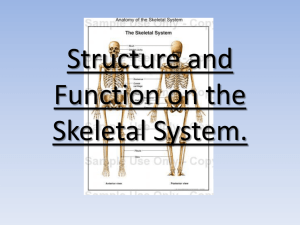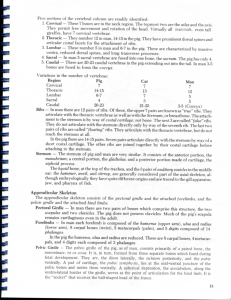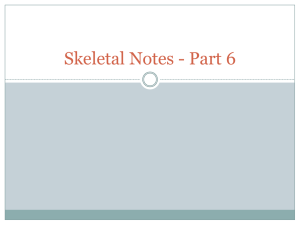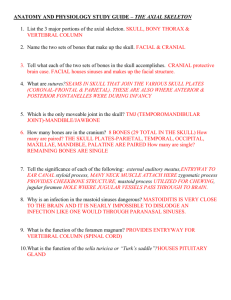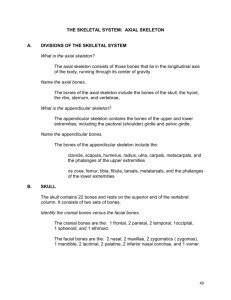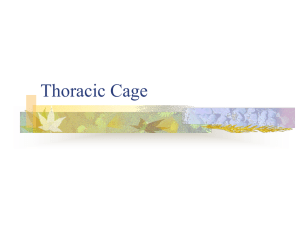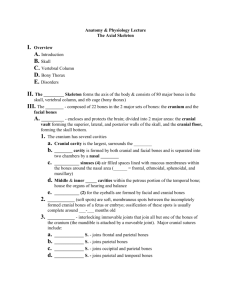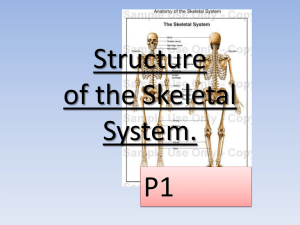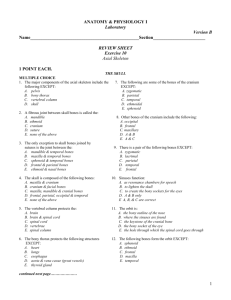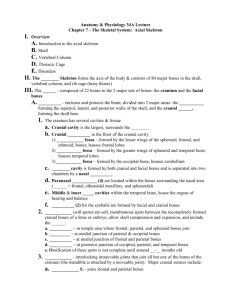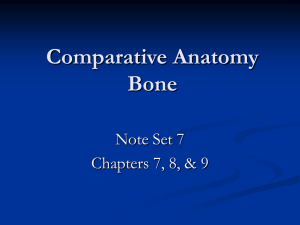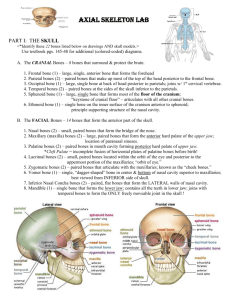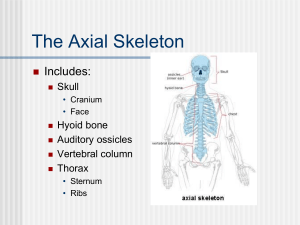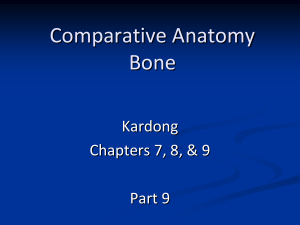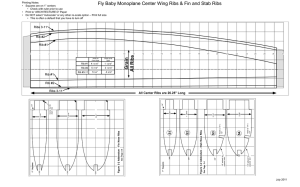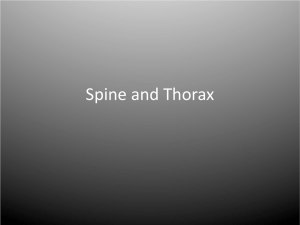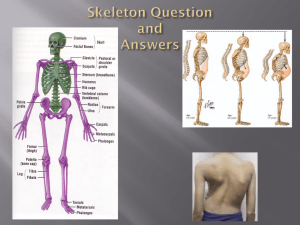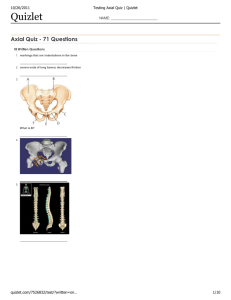HOC 1 - 11 Skeletal Unit 2
advertisement
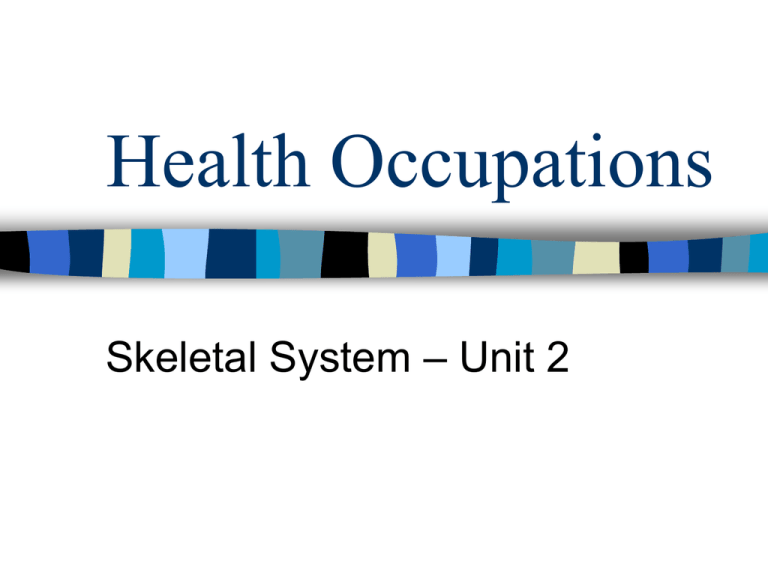
Health Occupations Skeletal System – Unit 2 Spinal Column Made up of 26 bones, divided into 5 parts Function – Protect spinal cord – Provide support for head & neck Curvature gives strength & flexibility Each bone is called vertebrae Intervertebral discs – Pads of cartilage separating the vertebrae – Act as shock absorbers – Allow bending & twisting Vertebrae Bone is called the vertebral body 5 parts – Cervical – neck, 7 – Thoracic – chest, 12 – Lumbar – waist, 5 – Sacrum – back of pelvic girdle, 1 – Coccyx – tailbone, 1 Cervical Vertebrae Thoracic Vertebrae C1 - Atlas C2 - Axis Vertebral Body Intervertebral Disk Lumbar Vertebrae Sacrum Coccyx Thorax Ribs, Sternum, Vertebral bones – Protect heart & lungs Ribs – 12 pair, called COSTAE – Attach to thoracic vertebrae on DORSAL surface of body – Types of ribs • True ribs – first 7, attach directly to sternum • False ribs – next 3, attach to cartilage of rib above • Floating ribs – last 2, do not attach to front of body – INTERCOSTAL space – • Area between ribs containing muscles, blood vessels, & nerves Thorax (cont) Sternum – Breast bone – 3 parts • Manubrium – upper part, where clavicles attach • Gladiolous – body, where hands are placed during CPR • Xiphoid process – small piece of cartilage at bottom, DANGER during CPR – Ribs attach to sternum with costal cartilage & provide a cage protecting the heart & lungs Sternum - Gladiolus True Ribs Xiphoid process False Ribs Floating Ribs Vertebral column Pectoral Girdle Shoulder – made up of clavicles & scapulas Clavicle – – 2 bones – Collar bones – Attach to manubrium of sternum with ligaments Scapula – 2 shoulder blades – Provide for attachment of upper arm bones Bones of the Arm Humerus – upper arm Radius – lower arm, thumb side Ulna – larger bone of lower arm, little finger side – Olecranon process – projection on upper end of ulna, forms elbow Carpals – 8 bones of wrist Metacarpals – 5 bones in palm of hand Phlanges – 14 bones of fingers Pelvic girdle Made up of 2 os coxae (coxal or hip bones) Joins with sacrum on dorsal side of body at the SACROILIAC joint Join together on ventral side of body at the SYMPHYSIS PUBIS 3 parts, fused together – Ilium – Ischium – Pubis Acetabula – 2 recessed areas (sockets) for leg bone attachment Obturator foramen – opening between ishium & pelvis allowing passage of nerves & blood vessels to & from legs Sacrum Sacroiliac joint Coccyx Ilium Ischial spine Acetabulum Obturator foramen Symphysis pubis Ischium Pubis Legs Femur – thigh Patella – kneecap Tibia – lower leg, large bone, big toe side Fibula – lower leg, small bone, little toe side Tarsals – 7 bones in ankle Metatarsals – 5 bones in instep of foot Phalanges – 14 bones in toes Calcaneous – heel that is formed by the large tarsal bone Parietal Zygomatic Occipital Mandible Scapula Xiphoid process Verbebrae Olecranon process Ilium Sacrum Maxilla Clavicle Sternum Ribs Humerus Ulna Radius Carpals Pubis Ischium Coccyx Symphysis pubis Metacarpals Phlanges Femur Obturator foramen Patella Tibia Fibula Tarsals Metatarsals Phlanges Calcaneous

